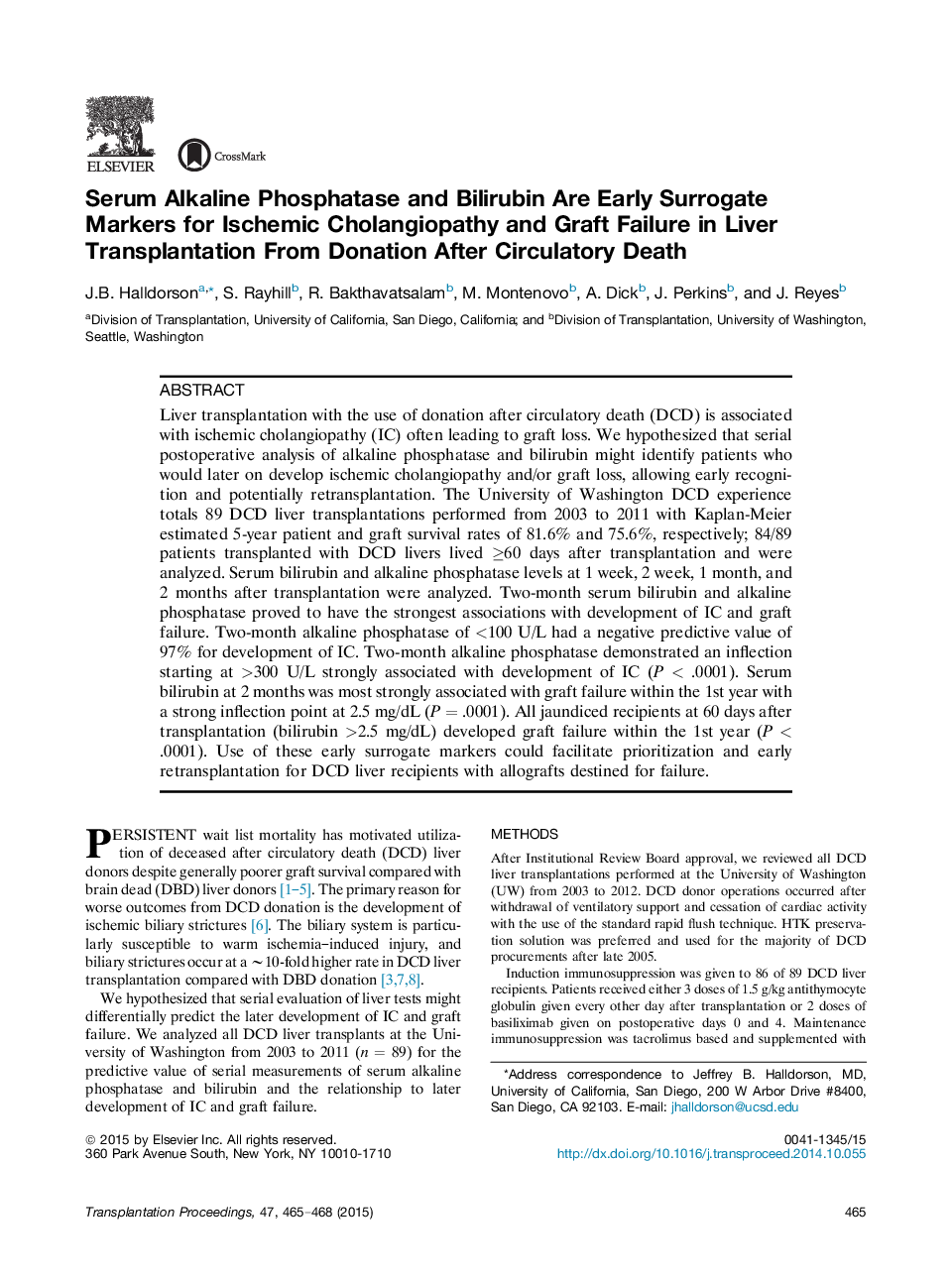| Article ID | Journal | Published Year | Pages | File Type |
|---|---|---|---|---|
| 4257628 | Transplantation Proceedings | 2015 | 4 Pages |
•The University of Washington DCD Liver Transplant Population was studied (n = 89).•Serial LFTs were analyzed as markers for later development of ischemic cholangiopathy and graft failure.•A 2 month serum Alkaline Phosphatase predicted later development of Ischemic Cholangiopathy. (P < .0001) A level <100 had a 97% NPV and >300 a PPV of 84%.•A 2 Month Serum Bilirubin >2.5 was 100% predictive of graft failure within the first year post transplantation. (P < .0001).•Utilization of these early surrogate markers could facilitate prioritization and early re-transplantation for DCD liver recipients with allografts destined for failure.
Liver transplantation with the use of donation after circulatory death (DCD) is associated with ischemic cholangiopathy (IC) often leading to graft loss. We hypothesized that serial postoperative analysis of alkaline phosphatase and bilirubin might identify patients who would later on develop ischemic cholangiopathy and/or graft loss, allowing early recognition and potentially retransplantation. The University of Washington DCD experience totals 89 DCD liver transplantations performed from 2003 to 2011 with Kaplan-Meier estimated 5-year patient and graft survival rates of 81.6% and 75.6%, respectively; 84/89 patients transplanted with DCD livers lived ≥60 days after transplantation and were analyzed. Serum bilirubin and alkaline phosphatase levels at 1 week, 2 week, 1 month, and 2 months after transplantation were analyzed. Two-month serum bilirubin and alkaline phosphatase proved to have the strongest associations with development of IC and graft failure. Two-month alkaline phosphatase of <100 U/L had a negative predictive value of 97% for development of IC. Two-month alkaline phosphatase demonstrated an inflection starting at >300 U/L strongly associated with development of IC (P < .0001). Serum bilirubin at 2 months was most strongly associated with graft failure within the 1st year with a strong inflection point at 2.5 mg/dL (P = .0001). All jaundiced recipients at 60 days after transplantation (bilirubin >2.5 mg/dL) developed graft failure within the 1st year (P < .0001). Use of these early surrogate markers could facilitate prioritization and early retransplantation for DCD liver recipients with allografts destined for failure.
